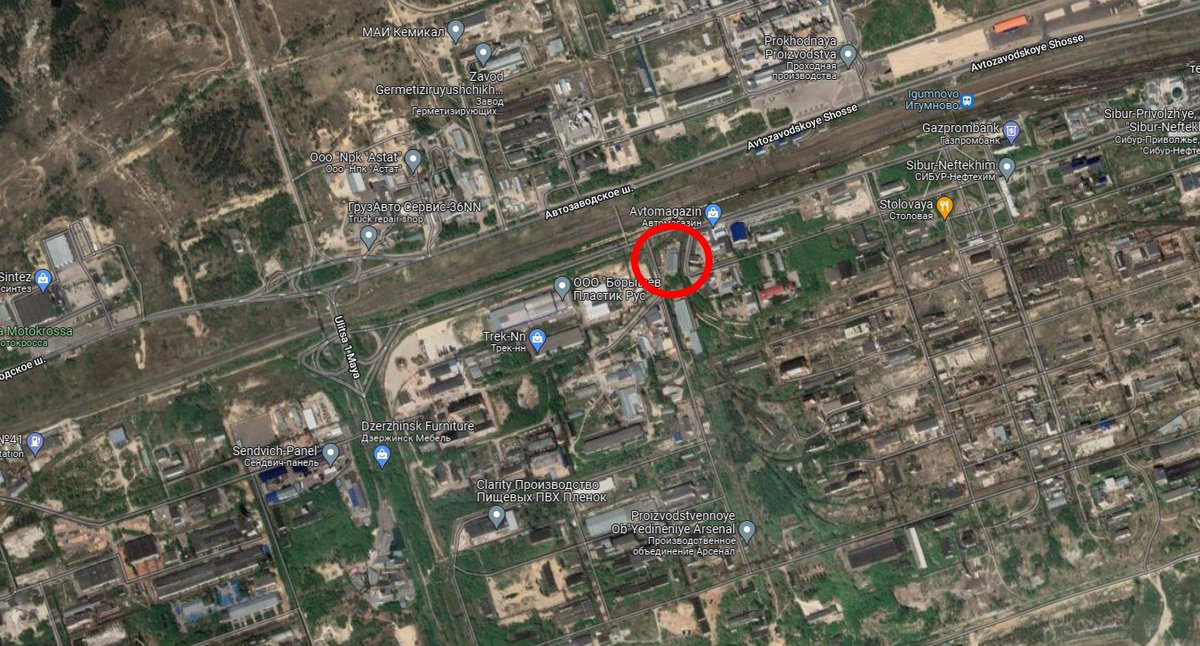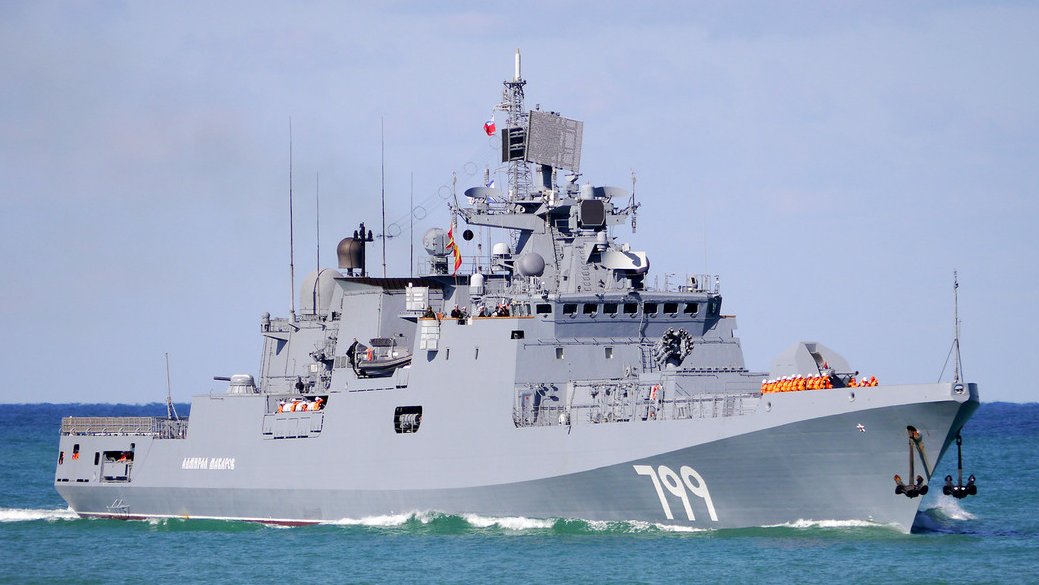
There was a large #fire in #Russia yesterday that may have been more than just another industrial accident. The fire was in #Dzerzhinsk, a city in the Nizhny Novgorod region, 230 miles (370 km) east of Moscow. A 🧵. 1/
The fire in Dzerzhinsk, Russia occurred in an old industrial park outside the city center. It started when a railway tank car exploded, which set other nearby railcars on fire as well. The tanks contained either solvents, fuel, or lubricants, depending on reports. 2/ 

Eventually the fire covered an area of about 2000 square meters (0.5 acres). That's not a particularly big area, but the fire was strong and generated a lot of smoke. Almost 100 firefighters with 29 pieces of fire equipment were called in to put out the blaze. 3/
Using overhead video footage of the aftermath of the fire (see next tweet), it's possible to pin down the precise coordinates where it occurred: 56.24884128471169, 43.56739648754635. 4/ 



Here's that overhead video footage of the aftermath of the Dzerzhinsk, Russia fire that I mentioned. 5/
There are two reasons this fire in Dzerzhinsk may be more than just another industrial fire in Russia. The first has to do with the city where it occurred. Dzerzhinsk historically has been one of the centers of chemical weapons manufacturing in Russia. 6/ 

There is no evidence I know of that chemical weapons still are being produced in Dzerzhinsk. But from 1941 to 1965, a variety of such weapons were in fact produced in the city. The legacy of this production has led Dzerzhinsk to be called "the most polluted city on earth." 7/ 

The company that produced most of the chemical weapons in Dzerzhinsk from 1941 to 1965 was the "Kaprolactam Organic Glass Factory." That tidbit of information, it turns out, brings us to the second aspect of yesterday's fire in Dzerzhinsk that makes it a tad suspicious ... 8/ 

The company that owns the facility in Dzerzhinsk that caught fire yesterday is: OJSC Kaprolactam. That's right. The facility that caught fire belongs to the successor company to the "Kaprolactam Organic Glass Factory," which produced chemical weapons after World War II. 9/ 

Now, I have seen no evidence to suggest OJSC Kaprolactam currently produces chemical weapons, or that it even produces chemicals used primarily for the production of munitions or other military purposes. 10/ 

It does seem noteworthy to me, however, that the company that owns the facility that caught fire yesterday in Dzerzhinsk, Russia has historical ties to chemical weapons production. It's also why I think it's fair to be suspicious as to the cause of the fire. 11/ 

As a side note, the pollution in Dzerzhinsk, Russia is so extensive that it led a number of stray dogs in the area to turn blue. This apparently is due to the fact that the dye known as "Prussian blue" once was extensively produced in Dzerzhinsk. 12/ 

• • •
Missing some Tweet in this thread? You can try to
force a refresh










